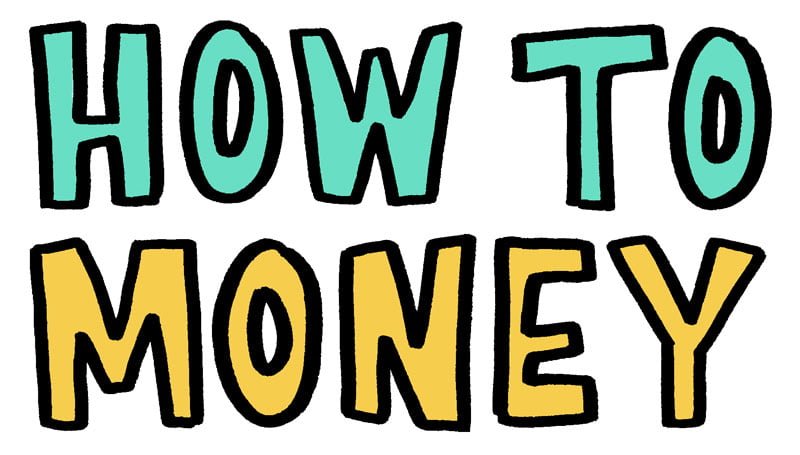Americans are in more debt than ever. Lots of it. In fact, in 2022, consumer debt hit $16.5 trillion, with the average American holding $96,371. Student loan debt, car loan debt, credit card debt, mortgage debt… it can be overwhelming. And being able to axe that debt not only alleviates a lot of money problems, but it’s also a massive mental relief. The more indebted you are the more it affects your stress levels, cognitive functioning, and even your relational intimacy!
Are you drowning in debt and don’t know where to start? Paying off debt can be challenging and with all the information out there it can cause confusion—leading to analysis paralysis. Fear not! There are two specific, user-friendly, repayment strategies experts recommend that can put you on the path to debt freedom: debt avalanche and debt snowball.
- Debt Avalanche method: start by crushing debt with the highest interest rate and work your way down.
- Debt Snowball method: start by eliminating debt with the lowest balance and work your way up.
Let’s go through each of these methods in more detail, and lay out a couple examples to help you understand which debt repayment method suits you best.
Debt Avalanche Method
In this approach you are prioritizing debts with the highest interest rate first. Minimum payments should be made to all your debts, but excess dollarss should be applied to the debt that is “costing you the most.”
The debt avalanche method is all about math—not psychology. Paying down the debt with the highest interest rate, regardless of what the balance is, saves you the biggest amount of money. That’s because fewer of those dollars are going to service the interest on that debt.
It should go without saying, but the most crucial step in succeeding with any debt repayment plan is to stop piling up more debt. For example, it doesn’t help to pay off one debt at the expense of racking up more debt in another form. You need to build a habit of lowering your debt balance, and striving towards absolute debt freedom.
If you’re tempted to take on more debt in a flippant manner you might need to take drastic preventative measures. It might even be best to take your credit cards out of your wallet and hide them in the back of your sock drawer. Or even to stick them in a Ziploc bag of water and toss them in your freezer.
Next, make a list of your debts in order of interest rate, starting with the highest charged rate and moving downward (see example below). This will tell you which debts to pay off in what order. This is the method that will allow you to save the most money on interest charges.
Debt Avalanche Example:
Let’s look at a scenario with the following multiple debts. Each debt type has a different interest rate and outstanding balance.
| DEBT BALANCE | INTEREST RATE |
| $13,000 Credit Card | 22% |
| 7,500 Personal Loan | 16% |
| $32,000 Student Loan | 5% |
| $21,000 Car Loan #1 | 4.5% |
| $4,500 Car Loan #2 | 3.75% |
Let’s say you have a credit card balance of $13,000 at 22% interest and a student loan of $32,000 at 5% interest. Individuals who use the debt avalanche method would work to pay off the $13,000 credit card debt before they tackle the student loan debt. After knocking out the credit card debt, re-rank your expenses in order of interest rate and attack the debt with the next highest interest rate first while paying minimum monthly payment on everything else.
Once you pay off the highest interest rate debt, work your way down to the debt with the lowest interest rate. The idea is that you’re saving money in the long run by paying off the debt with the highest interest rate first.
Be aware that this method takes discipline and commitment to pull off but if you are a good planner and can stay the course, debt laddering is likely a great tactic for you to take.
Debt Snowball Method
Debt snowball is all about psychology—not math. (But, psychology is crucial when it comes to how we handle our money. In fact, it is often more important than just the nuts and bolts math stuff.)
In this approach you are paying the minimums on all balances, but then you are attacking and paying off debt with the smallest balance first. Once that debt is eliminated, you roll payments that were going to that debt, to the debt with the next smallest debt balance.
This method got its name because the fastest way to build a snowball is to pack some snow into a tight ball and start rolling it on the ground. As you gain momentum and speed, your snowball grows exponentially. And as the snowball speeds up on its way down the hill, you can power through by slaying all that debt!
This debt elimination path can provide wins more quickly along the way, keeping you motivated. Most studies favor this method because it keeps you more engaged and creates more momentum.
Debt Snowball Example:
Now let’s look at a scenario of the debt snowball approach. Here is a table of multiple debts and loans with varying minimum monthly payment amounts.
| DEBT BALANCE | MINIMUM PAYMENT |
| $1,200 Medical Bill | $78 |
| $5,000 Personal Loan | $100 |
| $20,000 Student Loan | $200 |
| $25,000 Car Loan | $295 |
Using the example above, let’s say you have a $1,200 medical bill ($78 payment), $5,000 personal loan ($100 payment), $20,000 student loan ($200 payment), and a $25,000 student loan ($295 payment). Using the snowball method, you’ll continue to make minimum monthly payments on everything except the $1,200 medical bill. And if you want to be more aggressive, you can seek out potential side hustles to help throw extra money toward the debt. Once you plow through that medical bill you can proceed to the next high interest debt (personal loan) and begin the same process over again.
Hybrid Strategy: Best of Both Worlds
Still undecided on which method is best for you? Why not try a hybrid approach? Paying off high-interest items first but then prioritizing getting rid of smaller balances.
For instance, you’ll likely want to pay off credit card balances immediately as they are notorious for high interest debt – even moreso these days as rising rates have caused credit card interest rates to jump! The average credit card interest rate is now almost 20%. Ouch.
A car note at 5% just doesn’t deserve the same laser focus as paying off that credit card debt. But once you have those credit cards out of the way, then you can work towards paying off your car even if you still have student loan debt hanging around at an interest rate of 7%.
One other thing to consider is attempting debt consolidation to lower the amount of interest you pay while getting rid of your debt. It can be massively helpful to enlist a 0% APR balance transfer credit card. That can help speed up that debt payoff process.
Research shows that regardless of approach, focusing on eliminating one debt at a time can prove the most successful. Ultimately, the differences in overall interest paid and the time it takes are not that stark in most scenarios. What is most important is that you choose the method that will work best for you.
Main differences between Debt Snowball and Debt Avalanche methods:
The main difference between debt avalanche vs debt snowball is the order in which you prioritize your debts. With the avalanche approach you pay off high interest debt first. The snowball method prioritizes low balance loans first.
Here’s a quick table showing the differences between both approaches. We’ve included a few pros and cons for each strategy too.
| DEBT SNOWBALL | DEBT AVALANCHE |
| Pay off debt smallest balance to largest | Pay off debt with highest interest rates first |
| Gives you motivation as each small debt is paid | Could stall your motivation because you don’t see immediate success |
| On average, people pay off their debt in 18-24 months | Might take longer to pay off the first debt because you’re starting with the highest interest rate |
| After several bills are paid you begin to see the light at the end of the tunnel | You will most likely need more patience before you can celebrate your wins |
Which debt paydown strategy is best?
The short answer is: The one that works!
But seriously, everyone has different feelings towards their debt. And psychology plays a huge role in getting your personal finances in order. Some money experts will swear by a specific method, but sometimes their opinions will conflict. For example:
Clark Howard – strongly prefers using the debt avalanche method. “Mathematically, you pay off debt quicker if you do the avalanche method,” he says. “Typically, you’ll reduce the overall interest that you pay by 10% or more by attacking the highest interest rate debt as solidly as you can and then working your way down.”
Dave Ramsey – says the debt snowball method is the fastest way to pay off debt. “Without results, you’ll lose motivation,” he says. “And without motivation, you’ll likely lose steam and stop paying extra on that loan. Meanwhile, all of your smaller debts are still hanging around.”
In our opinion, the best debt repayment method is the one that works for YOU. There’s no harm in trying different approaches and going with the one you feel makes the most impact in your life.
Additional Debt Management Resources
First, if you are swamped with debt, consider getting credit counseling from a non-profit organization like the NFCC.org or Money Management International. Both of these organizations offer resources to help you make a plan to get out of your debt more quickly. If your debt exceeds 50% of your annual income this might be the best direction for you to go in.
Additionally, lots of folks find it helpful to have a tool where they can track debt payoff progress. We really like Undebt.it because it’s a free, mobile-device friendly tool that helps you come up with a plan and stick to it. This tool will help you implement whichever debt payoff strategy you prefer. How cool is that!? This tool can aid you in getting rid of that debt forever so you can do what you want with your money from here on out.
Frequently Asked Questions:
Here are a few questions that go hand in hand with the debt avalanche vs. debt snowball decision:
Is it better to invest or pay off debt?
If you are in crippling debt, you should make it your #1 priority to pay off. Investing while you’re in debt is like running up an escalator that’s going downwards. Even though you’re making money on investments, you’re losing money to interest payments.
That being said, if your debts are at a fixed, and have a low interest rate (say, anything under 6%), then it could be better to just make minimum payments and focus on investing excess money.
To understand this question better, we recommend learning the difference between good debt and bad debt, (and it’s also worth learning about when too much good debt can become bad debt!
Which credit card should you pay off first?
For the debt avalanche method, you would tackle the debt with the highest interest rate first.
For the debt snowball method, you should tackle the debt with the smallest outstanding amount first.
Like we mentioned earlier, there is no “perfect” debt repayment method that suits everyone. The best method is the one that you commit to, and that gets you out of debt quickly! The quicker you are able to get this debt burden off your back, the more you can focus on other personal finance goals.
Related: Best practices for credit cards
How many credit cards should you have?
If you are in chronic debt, DO NOT continue to open more credit cards. While using a 0% APR balance transfer card may work to help reduce interest payments, it can’t singlehandedly push you towards your goal of getting out of debt.
That being said, if you are a responsible credit card user, you may want to open new credit cards to maximize your rewards points. Here’s a great rundown to help you answer “should I open another credit card?” And here are our favorite credit cards based on spending categories.
All in all, we recommend having at least 3-4 credit cards that offer different rewards types.
The Bottom Line: Snowball or Avalanche?
Paying off debt is not for the faint of heart. As you work on your chosen elimination strategy, remember to stay focused on your end goal. Your desires and personality will most likely determine whether the avalanche or snowball method works best for you.
With the snowball method, you will enjoy those little wins and use them as motivation to keep going. If you are analytical and patient, the avalanche method may be right for you. The avalanche method may take longer to roll over to your next account but if you have larger balances with higher interest rates and you stick to the plan, it should save you money in the long run.
Whichever method you choose, it will take time, but the important thing to remember is to commit to a goal and stay with it. By staying focused on your end goal, and keeping control over not adding unnecessary new debts, your existing debts will slowly fade away.
There is no right or wrong answer when it comes to which method is best because every person’s debt situation is unique. Sometimes it might even be best to use a combination of both methods – that sweet hybrid approach! It’s a good idea to figure out what motivates you and which process will be the best fit for your specific debt paydown situation. Then, get after it!
Related Articles:
- Ways to pay off your mortgage early
- Why freezing your credit is important (and how to do it for free!)
- Best credit cards for unemployed people (and those rebuilding credit scores!)
*Feature pic by Becca Tapert on Unsplash!





Loved it! You tell it like it is